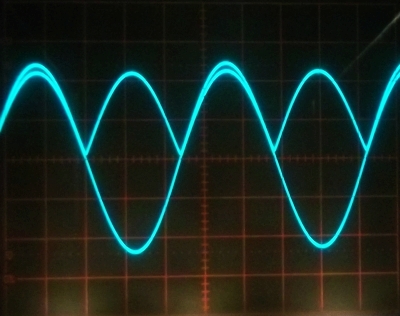I did do an even/odd version earlier but abandoned providing even-order since my interest was in processing an overall mix.plantylife wrote: ↑Fri May 12, 2023 12:29 pm I see!.. I thought that I saw somewhere that you've did both odd/even separate in the past.. my bad.
If I understand correctly you planning on crossfading between odd/even with a pan pot. Is there a reason for this?
Im curious why because the option to have both separate (like for instance the VSM-3) makes also sense, at least i think.
Looking forward Wayne!
Even was just too aggressive and introduced nasty IM.
For individual tracks it would be useful.
There are two polarities of even-order distortion available.
One polarity compresses (or expands) only the bottom half of the waveform, the other compresses (or expands) the top.
They do sound different.
We'll call one "-even" the other "+even."
When +even and -even are equal in level the result is odd-order.
The first control would pan between -even at full CCW to odd in the middle (+/- equal) to +even at full CCW.
This allows the user to set the ratio of even to odd and the polarity of even.
This sets the type of color.
If you were looking at it on the 'scope the signal would go from saturated only on the negative peak to both peaks saturated in the middle of rotation to saturation only on the positive peak as the control is rotated to full clockwise.
A second control would set the level of modulation which is actually a Ratio control.
This control adjusts how much color or saturation.
Ratio comes after the -even/odd/+even control.
The Ratio control can be made to provide compression to expansion over the full rotation range or just compression with a switch to change it to expansion mode. (The Dave Matthews demo had compression/expansion on a single rotation.)
I sort of favor the later since the usable ratio for compression can be quite large but a usable range for expansion is small.
Ratio can be described as "hardness" of the saturation curve.
A third control sets the Threshold which is the level where bending occurs.
Ideally this control could be calibrated in the user's dBFS scaling so bending could be set at -3 dBFS for example for protection limiting or much lower to introduce audible compression.
A fourth Makeup Gain control is required to bring the squashed output back up to level or in the case of expansion to lower output level.
To summarize if there were two or three controls to separately add in even and odd they would interact and if only two controls were used a single polarity would have to be chosen for even-order.






